Forecasters say very light ashfall, hazardous air quality possible on Big Isle

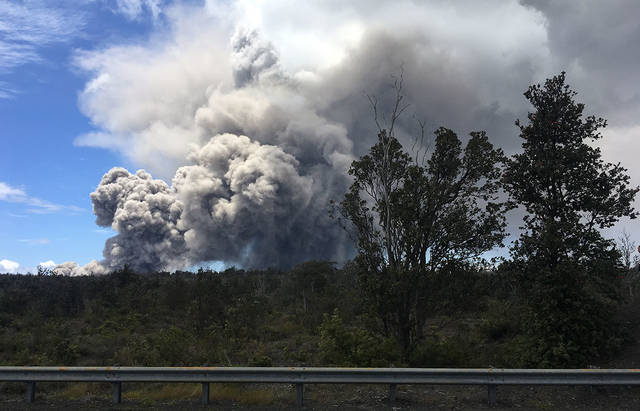
CINDY ELLEN RUSSELL / CRUSSELL@STARADVERTISER.COM
A plume of ash was seen Tuesday above Halemaumau crater on Hawaii island.
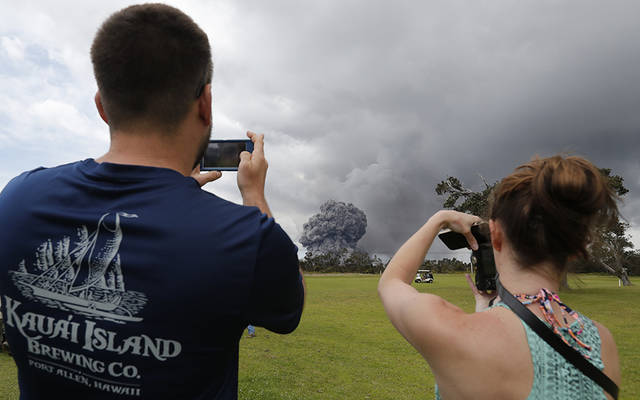
CINDY ELLEN RUSSELL / CRUSSELL@STARADVERTISER.COM
Spectators at the Volcano Golf and Country Club photograph the start of an ash plume billowing out of the Halemaumau crater Tuesday. The forboding plumes develop when rocks drop into lava and explode from intense heat.
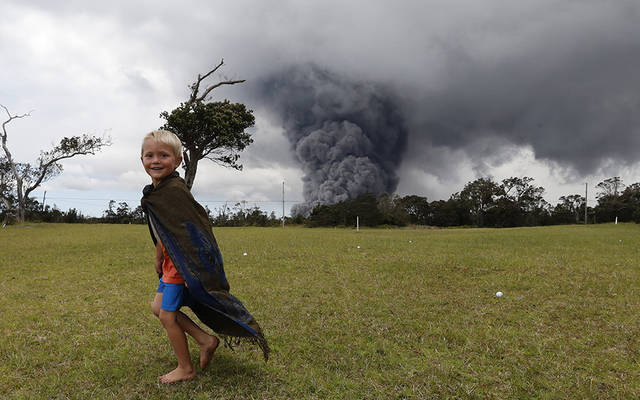
CINDY ELLEN RUSSELL / CRUSSELL@STARADVERTISER.COM
Roland Ellithorpe, 4, runs as an ash plume billows out of Halemaumau crater Tuesday. The plumes, located within the Kilauea caldera, occur when rocks drop into lava and explode from intense heat.
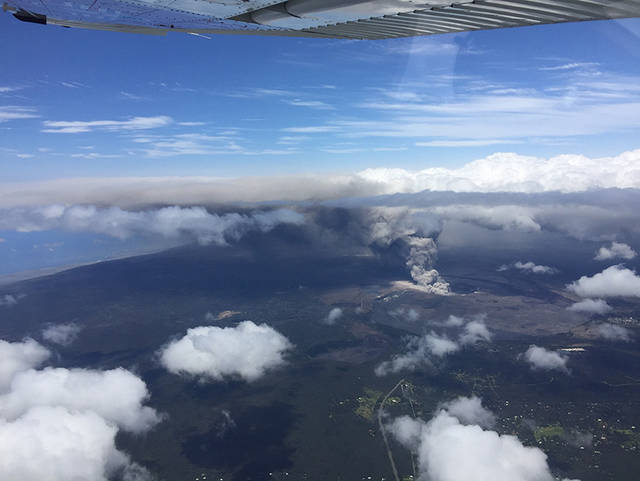
COURTESY USGS
Civil Air Patrol flight at 11:43 a.m. reported ash plume tops at 9,500 feet elevation with the dispersed plume up to 11,000 feet, according to the U.S. Geological Survey. Ashfall from the plume is falling on Hawaii island communities downwind.





UPDATE: 10:19 a.m.
The National Weather Service issued a special weather statement concerning the possibility of “very light ashfall” and hazardous air quality on Hawaii island.
Weather officials cited “occasional bursts” of volcanic ash coming from Halemaumau Crater today and light upslope winds, which “may carry ash across portions of Kau, Puna, and North and South Hilo Districts up to 10,000 feet.”
8:35 a.m.
A light earthquake shook the summit region of Kilauea volcano at 8:31 a.m.
>> LIVE: Webcam images from Halemaumau at Kilauea
>> Lava flow pauses, ash continues to billow from Halemaumau Crater
>> Kilauea summit ash eruption calms down; work to cap geothermal wells begins
>> Video: Big Island evacuee talks about staying at a Red Cross shelter
>> Amount of ash in plume above Kilauea decreases
>> Displaced residents at Red Cross shelter make do in tents
>> As lava destroys Hawaii homes, owners ask, Am I covered?
>> AP Video: Planes warned about Hawaii volcanic ash
>> USGS Video: Kilauea Volcano Update, May 15
>> Photos: Satellite before-and-after images show Kilauea’s devastation
>> Photos: Ash plume rises from Halemaumau
Don't miss out on what's happening!
Stay in touch with breaking news, as it happens, conveniently in your email inbox. It's FREE!
COMPLETE KILAUEA COVERAGE:
Star-Advertiser volcano coverage
Kilauea Volcano YouTube playlist
However, the preliminary magnitude 4.2 temblor does not pose a tsunami threat to the isles, according to the Pacific Tsunami Warning Center.
7:30 a.m.
The ashfall advisory for the Kau district on Hawaii island has been canceled.
6:45 a.m.
Although several fissures are producing spatter, the lava flow from fissure 17 has not advanced since Tuesday, according to Hawaii County Civil Defense.
Halemaumau Crater has been belching ash, which is drifting downwind to the southwest, nearly continuously, the agency said. Ashfall and vog have been reported along Highway 11 to Pahala.
The Hawaii County Fire Department reports that air quality is Condition Red around fissures in the southeast area of Lanipuna Gardens and surrounding farm lots on Pohoiki Road. Condition Red means there is an immediate danger to health and to take action to limit further exposure.
Highway 130 is open beyond Malama Street for local residents only, according to the state Department of Transportation. However, no large trailers or heavy equipment will be allowed over the metal plates.
Highway 132 is closed at the intersection with Pohoiki Road, and a checkpoint is located on Highway 130 by Pahoa High School. Traffic beyond all roadblocks is restricted to local traffic.
The Volcano School of Arts and Sciences will be closed today.
5 a.m.
An ashfall advisory remains in effect for the Kau district on Hawaii island through 8 a.m.
However, weather officials will reevaluate the advisory after sunrise and may need to extend it if the ashfall persists.
Hawaii island can expect to see winds today from the northeast around 15 mph, according to the National Weather Service.
Despite earlier rumors about a possible tsunami related to volcanic activity, a Pacific-wide tsunami is not possible from the ongoing geological activity associated with Kilauea’s eruption, according to the U.S. Geological Survey and the Hawaiian Volcanic Observatory.
TUESDAY, MAY 15
7:20 p.m.
The Hawaii Civil Defense Agency responded tonight to a rumor about a possible tsunami.
The agency noted that “according to the Hawaiian Volcano Observatory there is no geologic evidence for a tsunami-generating earthquake at this time. Any such event is extremely unlikely.”
The Civil Defense has received inquiries from media and the public asking about the potential for a tsunami.
HVO, Pacific Tsunami Warning Center and other state and federal partners continue to monitor volcanic and seismic activity.
6:40 p.m.
The National Weather Service has extended the ashfall advisory for areas of the Big Island until 8 a.m. Wednesday as the Halemaumau Crater at Kilauea’s summit continues to intermittently emit huge plumes of ash.
The volcanic ash is expected to reach the region to the southwest including Wood Valley, Pahala, Punaluu, Naalehu, and Hawaiian Oceanview Estates.
Ash accumulation up to a quarter-inch is expected to be deposited in the advisory areas, forecasters said.
Tradewinds are expected to weaken tonight into Wednesday, then become breezy again from Thursday into the weekend, they said.
The weather service said the advisory may need to be extended depending on conditions and warns that the ash may cause eye and respiratory irritation. Anyone in the advisory areas with respiratory illnesses should remain indoors to avoid inhaling the ash particles and everyone outside should cover their mouth and nose with a mask or cloth, officials said.
Earlier this afternoon, Hawaiian Volcano Observatory issued a “notice for aviation” warning pilots that the ash plume rising from Halemaumau crater at the summit of Kilauea volcano has been reported as high as 12,000 feet and conditions could become “more explosive.”
Ash emissions “will likely be variable with periods of increased and decreased intensity depending on the occurrence of rockfalls into the vent and other changes within the vent. At any time, activity may become more explosive, increasing the intensity of ash production and producing ballistic projectiles near the vent,” the HVO notice said.
HVO scientists this evening also reported that fissure No. 6, near Leilani Avenue and Pohoiki Road, has become active again, with lava fountaining and spatter seen about 4:45 p.m. The flow from fissure No. 17, meanwhile, has had little advancement since this morning after progressing toward Highway 137 at the start of the week.
For more information on the hazards of volcanic ash and vog, go to https://volcanoes.usgs.gov/volcanic_ash/ Opens in a new tab and https://vog.ivhhn.org/. Opens in a new tab
5:45 p.m.
The Volcano School of Arts and Sciences will be closed Wednesday due to changes in the wind direction that could bring volcanic ash from Kilauea’s summit to the area.
The charter school in the town of Volcano is just a few miles from the summit crater.
School officials said a change in wind direction Wednesday “likely will result in dangerous driving conditions from ash fall … We fully anticipate being open on Thursday as the wind direction is expected to return to southwesterly trades blowing any ash or (sulfur dioxide) away from our campuses.”
Kilauea’s Halemaumau crater today was sending a large cloud of ash over parts of the Kau District in the southern area of the Big Island today.
3:45 p.m.
Hawai‘i Electric Light Co. officials are warning that the volcanic ash falling on parts of the southern Big Isle could lead to extended power interruptions.
Ash falling from increased eruptions from Halemaumau crater at the summit of Kilauea has led to warnings to the public and pilots. The National Weather Service has issued an ashfall advisory until 6 p.m. warning that volcanic ash is expected to fall southwest of the summit, including on Wood Valley, Pahala, Punaluu, Naalehu, and Hawaiian Oceanview Estates.
“A combination of a light dusting of ash and moisture on utility insulators could result in electrical short circuits, which could cause power interruptions,” said Rhea Lee-Moku, Helco spokeswoman. “If this occurs, we are prepared to respond once it is safe for employees to work in the impacted area. While we have equipment that can wash off ash from utility equipment, this is the first experience we will have with widespread volcanic ash.”
She said extended power interruptions may occur if the ash fallout covers a large area or is very heavy and damages utility equipment.
During a power interruption, the company recommends that customers should:
>> Unplug sensitive electronic equipment and other appliances.
>> Keep refrigerators and freezers closed as much as possible. Discard any perishable food that has been above 41 degrees F for more than two hours.
>> Those dependent on life support should make prior arrangements with a hospital or emergency facility.
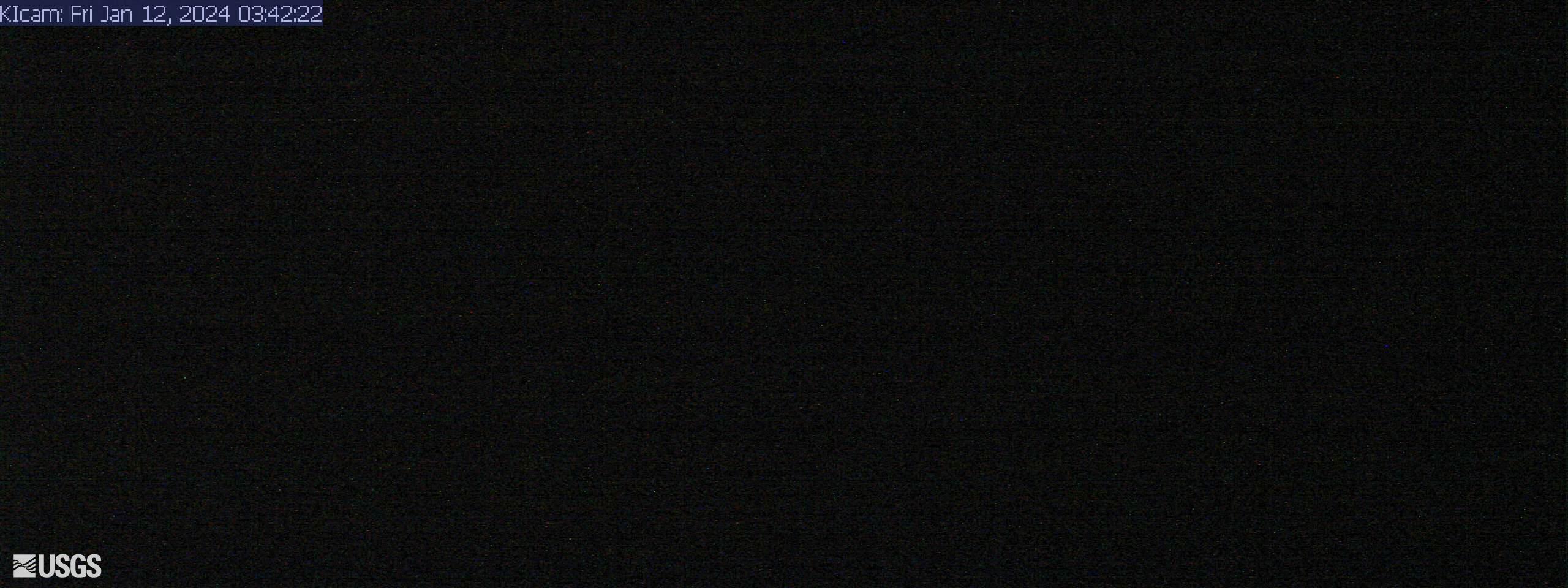
2:45 p.m.
The state Department of Transportation has reopened Highway 130 in Lower Puna beyond Malama Street for residents only.
Hawaii County Civil Defense says that no large trailers or heavy equipment should be taken over the metal plates that have been placed over cracks in the road that have been caused by the volcanic activity .
The Hawaiian Volcano Observatory reports a steady eruption of ash coming from Halemaumau Crater is causing ash to fall downwind across portions of Kau District. Ash is being reported along Highway 11 to Pahala.
2:15 p.m.
The Hawaiian Volcano Observatory has issued a “notice for aviation” warning pilots that the ash plume rising from Halemaumau crater at the summit of Kilauea volcano has been reported as high as 12,000 feet and conditions could become “more explosive.”
HVO has upgraded its aviation condition alert to red from orange.
The alert says, “As of early this morning, eruption of ash from the Overlook vent within Halemaumau crater at Kilauea Volcano’s summit has generally increased in intensity. Ash has been rising nearly continuously from the vent and drifting downwind to the southwest. Ashfall and vog (volcanic air pollution) has been reported in Pahala, about 18 miles downwind. (National Weather Service) radar and pilot reports indicate the top of the ash cloud is as high as 10,000 to 12,000 feet above sea level, but this may be expected to vary depending on the vigor of activity and wind conditions.”
HVO scientists warn that “at any time, activity may become more explosive, increasing the intensity of ash production and producing ballistic projectiles near the vent.”
They said while the ash cloud is drifting to the southwest with the trade winds, conditions are expected to change in the next 24 hours and other areas around Kilauea’s summit are likely to receive ashfall.
Ash has been reported falling today in Pahala and the Kau desert.
For more information on the hazards of volcanic ash and vog, go to https://volcanoes.usgs.gov/volcanic_ash/ Opens in a new tab and https://vog.ivhhn.org/. Opens in a new tab
>> RELATED VIDEO: Nearly 20 fissures open from Hawaii volcano (mobile app users, click here Opens in a new tab)
PREVIOUS COVERAGE
HILO >> The action at Kilauea volcano shifted mostly to the summit area today as rockfalls and gas explosions put on an impressive show at Halemaumau crater, sending a gray plume several thousand feet into the sky that sprinkled ash over roadways at the village of Pahala.
Steve Brantley, deputy scientist-in-charge at the U.S. Geological Survey’s Hawaiian Volcano Observatory, said the vigor of the ash plumes in the crater “picked up a bit” today. The ash emissions became almost continuous, “with intermittent, more energetic ash bursts or plumes,” he said.
The trade winds from the northeast pushed most of the ash to the southwest. David Damby, a chemist and volcanologist with the USGS, said the ash is essentially “rock powder,” and is not poisonous.
“You just want to limit your exposure to it,” he said, because it can cause eye, nose and throat irritation.
As of 1 p.m. today, ash was being reported along Highway 11 to Pahala.
About 30 miles away at the Lower East Rift Zone of the volcano, fissure 18 generated a lava flow that moved toward the northeast and is now about 1 1/2 miles long. However, that rift has been adding “very little” new lava to the flow in recent hours, Brantley said.
“Field reports are that the flow moved about 1,200 feet in the past day, but it is not moving very much at the moment,” he said.
According to the HVO, the only fissure that remains active this afternoon is fissure 17, which has slowed considerably and is moving at a rate of about 20 yards per hour toward the ocean. As of 1 p.m., the lava flow was about 1.2 miles from Highway 137, with no homes or roads currently threatened.
Scientists also observed a small new fissure that opened just uprift of fissure 18 and released a small pad of lava, Brantley said. Earthquake activity suggests magma is still pushing its way into the area, he said.
“It’s slowed down in the past couple of days, but it’s still moving,” although the location of the earthquakes suggest the underground magma has not advanced much beyond fissure 18, Brantley said.
Ormat Technologies Inc., which owns the shuttered Puna Geothermal Venture plant on the East Rift Zone, issued a statement today that the steepest topographical paths that might be a route followed by lava “are around and away from the power plant in the direction of the ocean.
“This gives the company confidence that there is a low risk of surface lava impacting or making its way to the facility,” the statement said.
Isaac Angel, CEO of Ormat Technologies, said there has been no physical damage to the above-ground portions of the 38 megawatt plant yet, but a full assessment will have to wait until the situation stabilizes.
“We continue to monitor the situation in coordination with (Hawaii Electric Light Co.), and with local and state authorities. We expect to restore the Puna operations as soon as it is safe to do so,” Angel said in the statement.
Tom Travis, administrator of the Hawaii Emergency Management Agency, announced Monday the state and county are moving forward with a plan to kill three active geothermal wells on the PGV site by injecting them with cold water and sealing them with iron plugs.
That effort to kill the wells could begin as early as today, Travis said.
Because of the volcanic activity, Hawaii island residents and visitors are also advised of the following:
>> The state Department of Transportation said this afternoon that work on Highway 130 near Leilani Estates has been completed from Malama Street to Kamaili Road due to new cracks in the pavement that developed overnight. The road reopened at 1 p.m. for local traffic only.
>> Highway 132 is closed at Pohoiki Road intersection; a checkpoint is located on Highway 130 by Pahoa High School with only local traffic allowed.
>> The Health Department reports hazardous emissions of sulfur dioxide gas from fissures are especially dangerous for elderly, children, babies and people with respiratory problems. SO2 can be carried by wind, or, cover an area with no wind.
>> HVO scientists say the eruptive activity in Lower Puna remained concentrated at fissure 17, with intermittent lava spattering at fissure 18, today. A new fissure, No. 20, near fissure 18 also produced two small pads of lava, they said early this afternoon. The lava flow from fissure 17 advanced about 1,250 ft since 2:30 p.m. Monday. The advance of the flow has slowed significantly since Monday afternoon, according to HVO. Volcanic gas emissions remain elevated throughout the area downwind of the fissures, HVO warns. Scientists said magma continues to be supplied to the lower East Rift Zone and elevated earthquake activity continues.
>> The state Department of Transportation planned to reopen Highway 130 from Malama Street to Kamaili Road to local traffic this afternoon after an inspection earlier today showed the roadway is safe. However, the highway may be shut down again if hazardous conditions develop.
>> The air quality in Pahala this morning has been measured as “unhealthy” and is decreasing, according to the University of Hawaii’s Vog Measurement and Prediction Project Opens in a new tab. “Avoid excessive exposure to ash which is an eye and respiratory irritant,” the weather service said in an alert. “Those with respiratory sensitivities should take extra precaution to minimize exposure.”




